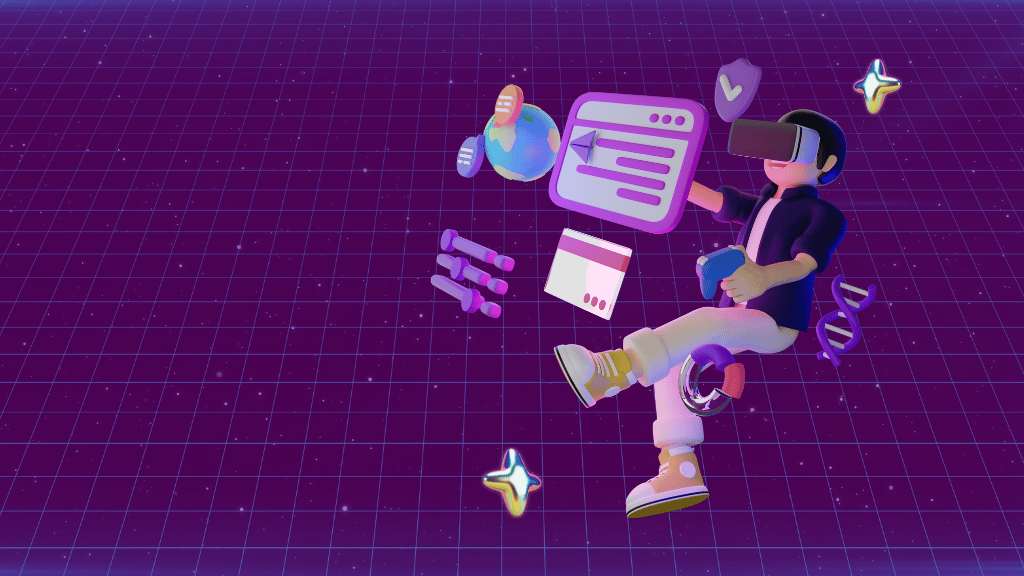
As technology continues to evolve, the field of artificial intelligence has become increasingly vital. One company at the forefront of this revolution is Altered State Machine (ASM), and their team of AI Research Scientists (AIGC) plays a crucial role in advancing this cutting-edge technology. In this post, we’ll delve into what it means to be an AIGC at ASM and how they leverage machine learning and generative AI models to bring innovative solutions to the world.
What is AIGC?
Before we get into the specifics of the role, let’s first define what AIGC actually stands for. AIGC stands for “AI Generative Computing,” which is a term coined by ASM to represent their unique approach to artificial intelligence research. In essence, AIGC involves using machine learning algorithms to create generative models that can mimic human creativity and imagination.
At its core, AIGC relies on advanced machine learning algorithms that allow computers to analyze vast amounts of data and identify patterns that can then be used to create new content or generate novel ideas. This process is known as generative modeling, and it has become increasingly popular in recent years as businesses and researchers seek to harness the power of AI to enhance their operations.
One of the key advantages of AIGC is its ability to automate complex tasks that were previously only possible for humans. For example, AIGC can be used to create compelling marketing copy, design new products, or even compose music and art. By leveraging the latest advancements in machine learning and deep neural networks, AIGC can generate highly realistic and intricate content that rivals that of human creators.
Overall, AIGC represents a major breakthrough in the field of AI research and has the potential to transform many industries by unlocking new levels of efficiency, productivity, and creativity. As companies continue to invest in this technology, we can expect to see even more impressive applications of AIGC in the coming years.
The Role of an AIGC at ASM
As an AI Research Scientist at ASM, the primary responsibility is to push the boundaries of what’s possible with generative AI models. This involves working closely with a team of talented engineers and data scientists to design and develop new machine learning algorithms that can learn from vast amounts of data and generate novel content like images, videos, and text.
In addition to developing cutting-edge technology, AIGCs at ASM are also responsible for exploring new approaches to training these models. This includes experimenting with different types of neural networks, optimization techniques, and regularization methods to improve model performance and generalization.
One of the most exciting aspects of working as an AIGC at ASM is the opportunity to explore emerging technologies like web3 and the metaverse to see how they can enhance ASM’s capabilities. For example, ASM is currently exploring the use of blockchain technology to create decentralized AI models that are more transparent, secure, and accountable.
ASM has a rich history of breakthroughs in the field of generative AI, including the development of a generative AI model capable of creating realistic, high-resolution images of people who don’t actually exist. This breakthrough has enormous implications for industries like advertising and entertainment, where creating convincing virtual characters has always been a challenge, and it opens the door to entirely new possibilities for creative expression.
Overall, the role of an AIGC at ASM is both challenging and rewarding. The work is fast-paced, dynamic, and constantly evolving as new technologies emerge and new problems arise. But it’s also incredibly fulfilling knowing that the work being done has the potential to change the world in meaningful ways.

How AIGC Leverages Machine Learning and Generative AI Models
So, what exactly goes into building these generative AI models? At a high level, the process involves training the model on vast amounts of data and then using it to generate new content based on that data. For example, if you wanted to create a generative AI model that could generate realistic images of dogs, you might feed it thousands of images of dogs and use machine learning algorithms to teach it how to “understand” what makes a dog look like a dog.
Once the model has been trained, you can then use it to generate new images of dogs that don’t actually exist in the real world. This is where the “generative” part of generative AI comes in – the model is generating new content based on the rules it learned during the training phase.
On top of this, ASM’s AIGC team is always looking for ways to improve the performance of these models. This includes experimenting with different types of neural networks, exploring novel training techniques, and developing new tools and libraries to make the development process faster and more efficient.
Another way is to use an AI tool. Workflos is a leading provider of AI development tools, and their products can be invaluable in building generative AI models like those used in AIGC.
One product that could be particularly useful for developers working on AIGC projects is the Workflos AI Platform. This platform provides a comprehensive set of tools and resources designed specifically for building AI models, including generative models like those used in AIGC. With the AI Platform, you can easily manage your data, train your models, and deploy them to production environments with just a few clicks.
In addition to the AI Platform, Workflos also offers a number of other products that can be useful for AIGC development. For example, their AutoML suite includes tools for automating many aspects of the machine learning Workflos, from data cleaning to model selection. This can help speed up the development process and free up time for developers to focus on more complex tasks, like improving the performance of their generative models.
Overall, using Workflos AI products in conjunction with ASM’s AIGC approach can help streamline the development process and make it easier to create high-quality generative AI models. By leveraging the latest advances in AI research and development, businesses and researchers can unlock new levels of creativity and efficiency, paving the way for an exciting future in AI-powered innovation.
Conclusion
In summary, being an AI Research Scientist (AIGC) at Altered State Machine is an incredibly challenging and rewarding career path. By leveraging cutting-edge machine learning techniques and generative AI models, AIGCs at ASM are pushing the boundaries of what’s possible with artificial intelligence. With exciting emerging technologies like web3 and the metaverse on the horizon, the future looks brighter than ever for this innovative field.


